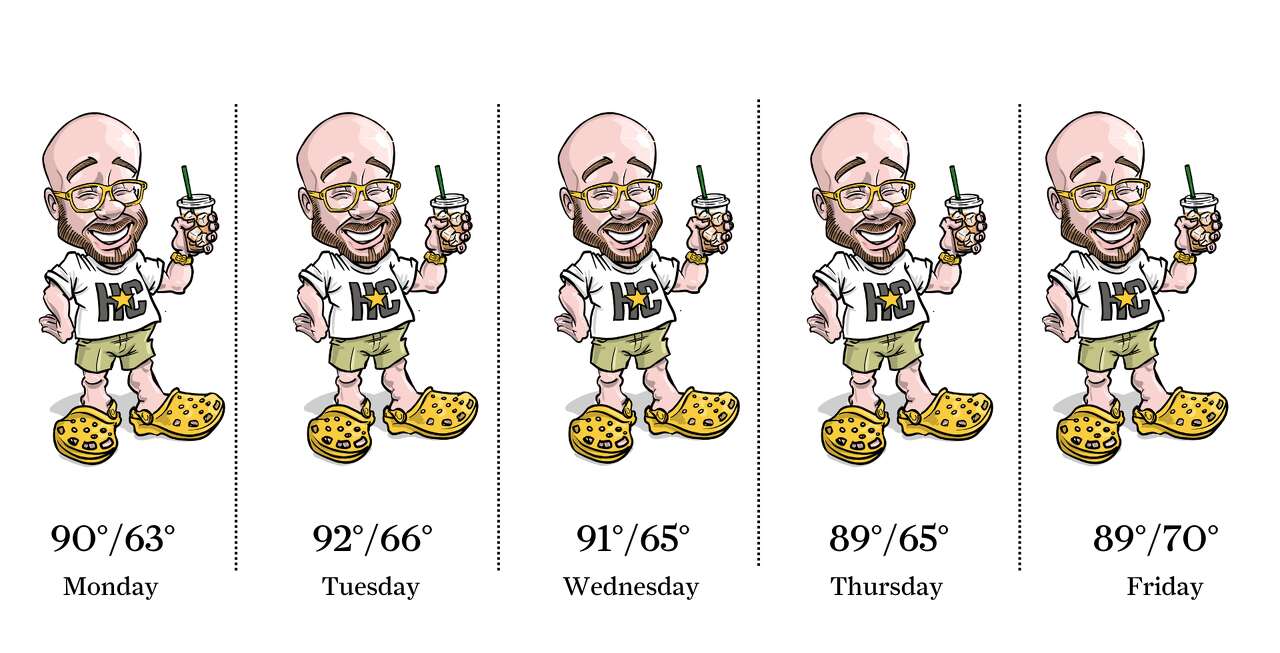All-Access Sale: 6 Months for 99¢Explore essential reporting with our best offer. Sale Ends Oct. 19 |
Is confirmation of an EF5, the most powerful type of tornado, a bad omen for Texas?
An EF5 tornado, the most powerful type of twister on the Enhanced Fujita wind and damage scale, was confirmed by National Weather Service for the first time in 12 years last week. Newsroom meteorologist Justin Ballard looked at what such a powerful tornado in North Dakota last June could mean for Texas, which regularly leads the nation in the total number of tornadoes each year.
While Texas hasn’t had a confirmed F5 or EF5 tornado since 1997, climate change could be affecting the frequency and intensity of tornadoes, he says. Some of the conditions that fuel tornadoes could become more common in a warming world.
Tornadoes thrive on extreme contrasts in weather conditions, as well as increased heat and humidity that can energize severe storms, Ballard writes. The connection between climate change and tornado activity remains uncertain and under active study, he says.
READ MORE: First EF5 tornado in 12 years confirmed in North Dakota — a possible warning for Texas?
 | Roberto Villalpando, Texas Weather Science Editor |
Justin's Five Day Fit Check

Photo by: Ken Ellis
A stubborn October heat dome continues to bake Southeast Texas with daily high temperatures in the lower 90s this week and bone-dry weather. Moderate drought, which first spread into northeastern Harris County earlier this month, will likely worsen, given this week’s heat and dryness. A pattern change could occur after this weekend, but it wouldn’t be wise to put too much hope into that notion just yet.
 | Ask a Meteorologist |
What would happen to Texas weather forecasting if NOAA’s budget is cut?
Your local National Weather Service forecasts will continue despite the federal government shutdown, with essential staff still working. What’s less certain is how future cuts at its parent agency, the National Oceanic and Atmospheric Administration, could affect the science that makes them possible.
A new interactive map from the Environmental Defense Fund helps illustrate what’s at stake. It charts more than 700 NOAA sites nationwide, including dozens across Texas tied to the weather service and the National Ocean Service — agencies responsible for everything from hurricane tracking to flood forecasting and coastal restoration.
“NOAA does an incredible amount for Texans, protecting us from hurricanes, floods, and extreme heat,” said Colin Leyden, the Environmental Defense Fund’s Texas director. “Most people don’t realize how much we rely on it every single day.”
Leyden said the data makes NOAA’s local reach visible for the first time.
“You can see NOAA’s footprint in nearly every Texas county,” he said. “It’s not abstract — it’s woven into our everyday lives.”
While the shutdown persists, the map shows that NOAA’s resources are widespread and affect the safety and resilience of communities across Texas and the nation.
Explore the interactive map to see NOAA’s presence and work near you.
Do you have a Houston weather or climate question? If so, you can submit your weather questions to justin.ballard@houstonchronicle.com. They may just end up in a future edition of the weather newsletter.
Something to see

Photo by: National Weather Service
How much rain has Houston received in 2025? The more appropriate query might be to ask how much the city hasn’t gotten. As of Monday, Houston has recorded about 30 inches of rain, which is about 10 inches below normal for the year to date. Flatness in the chart reflects trace amounts or zero rainfall. Houston has not received measurable rainfall in almost three weeks. Figures are from Bush Intercontinental Airport, the city’s official climate observation site.
Texas Weather Wonks Trivia
Houston has finished the first 12 days of October without recording a measurable amount of rainfall at Bush Intercontinental Airport, the city’s official climate observation site, according to the National Weather Service. The city has gone as many as 30 days in October without any rainfall as recently as what year?
A) 2010
B) 2017
C) 2020
D) 2024
Hit reply to this email to let us know what your guess is and a chance to win. We’ll let you know who answered correctly first in next week’s newsletter.
Here’s the correct answer to our previous trivia question: Houston’s daily record high for Oct. 6 was 94 degrees. When was that daily heat record set? It’s D) 2024
Other weather news
|
|
|
|
Meet the Team

Photo by: Susan Barber
The 713 Weather Radar newsletter is written and produced by meteorologist Justin Ballard and Texas Weather Science Editor Roberto Villalpando. You can reach out to them at justin.ballard@houstonchronicle.com and roberto.villalpando@houstonchronicle.com or by replying directly to this email.
|




